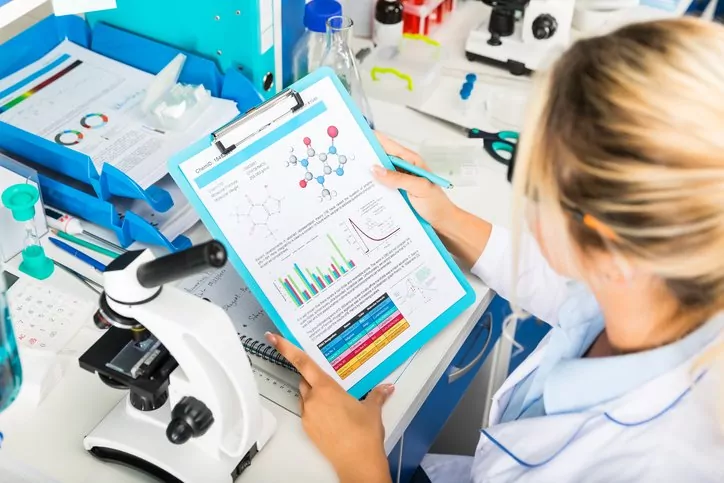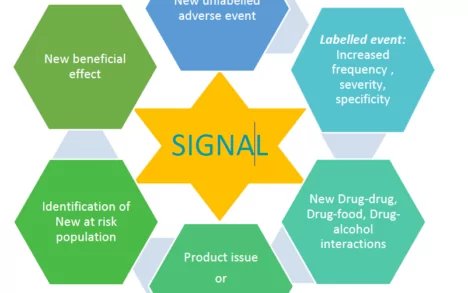The Pharmaceutical Information and Pharmacovigilance Association (PIPA) hosted its annual conference in London on 18 and 19 September 2024[i]. In a break from tradition, this year’s conference kept discussion on pharmacovigilance (PV) and medical information on separate days, providing a focused agenda and networking opportunities to support PIPA members’ interests and development.
The event had speakers from industry, consultancies, academia and regulatory authorities from the UK and other countries presenting on a variety of topics.
The conference started with a welcome session from the PIPA president followed by discussions on product acquisition management, inspectorate expectations and recent findings for audits and inspections, cardiac safety concerns in phase 2 and 3 clinical trials, personalized patient safety, and the use of electronic health records for real-time safety monitoring and reporting in clinical studies.
Product Acquisition Management – integration of a product into an existing PV system
The pharmaceutical industry is no stranger to mergers and acquisitions (M&A), with deal sizes increasing significantly over the past year[ii].
The speakers in this first session of the day highlighted the fact that most companies do not have a formal process for involving PV in the product acquisition process. Product acquisition follows a series of key steps starting from target identification followed by the due diligence step where PV involvement is generally on an ad hoc basis and relies on personal relationships rather than a systematic effort to bring in the right people.
Speakers noted that there is usually more focus on operational integration preparation rather than actual due diligence activities and assessment of safety and viability of a product. It is understood that discussions on acquisitions are typically confidential, meaning involvement is limited to senior functional management. However it was pointed out that safety should be at the forefront of these discussions and built into the business development process to ensure the right information is obtained from sellers and the coordination and alignment with other related functions, especially regulatory affairs and quality.
MHRA GPvP Inspections: programme, tips and findings
The next session was presented by an inspector from the Medicines and Healthcare products Regulatory agency (MHRA), who discussed the MHRA inspection program and processes, tips for facilitating a successful PV inspection and recent PV inspection findings. MHRA inspections are typically grouped into four inspection arms: Routine pharmacovigilance activities, routine risk management and safety communication, additional risk minimisation measures (aRMMs) and non-interventional post authorisation safety studies (NI PASS)[iii]. Inspections are risk-based depending on a company’s product portfolio (and volume of products), global PV system and compliance history.
MHRA PV inspection programme covers the following:
- Schedule of inspection: Initial or re-inspection, routine or for cause. To note, the MHRA has recently introduced an alternative to re-inspection – remote compliance assessment (RCA) for inspections with a significant finding in one main topic area where document-based review of remediation is feasible.
- Time of inspection conduct: Pre- or post- approval, or pre-launch inspection
- Issued inspection notice: Announced or unannounced
- Location of inspection conduct: On-site or remote
Inspections are not always announced, so it is the responsibility of all marketing authorization holders (MAHs) to ensure that they are always inspection-ready. The pharmacovigilance system master file (PSMF) is critical in inspection planning and conduct and to present it to the authority. Hence it is critical that the documents be kept up to date.
The MHRA presenter highlighted the importance of robust tracking and provision mechanisms for document requests, clarification of requests where needed and proportionate quality checks, as well as open dialogue during the interview stage but not giving more information than requested and being confident in the responses given. An inspection plan can be flexible and inspectors should be notified if any staff are unavailable for . Critical PV activities required in the inspection planning phase are: Process maps, teams/functions involved in each process, key contacts/subject matter experts, tasks, documents (procedures and outputs) as well as the roles and responsibilities (globally) for inspection support and involvement.
however the number of inspections have gone down from 32 conducted during 2021/22 to 17 during 2022/2023. Below is a snippet of the MHRA inspection trends between 2012 and 2023:
Figure 1. MHRA Inspection critical findings presented at the 2024 PIPA conference1.
Outsourced PV: Considerations from Vendor and Utiliser
The need for robust and compliant PV systems, processes and experienced talent has increased the cost of maintaining the right infrastructure to support PV. This point was highlighted during the panel discussion on PV outsourcing.. During the panel discussion session five key areas of consideration, both from a pharmaceutical company (utilizer) and a service provider (vendor) point of view were posed for discussion among the delegates:
- Due diligence and vendor selection
- What am I paying for?
- Is this overpriced?
- Is this the right size/fit of provider for me or right size of company for the provider?
- Should I not just stay with one provider?
- How many companies should I get quotes from?
- Is the process of selection taking too long?
- Contracts and negotiations
- Whose template should I use?
- What is the time for turnaround of contract?
- How do I avoid ambiguity?
- What is the process for legal and how complex is it to get signed?
- Joint working practices and communications
- Frequency of meetings and what information needs to be shared.
- Have governance meetings to avoid silos
- Documentation of discussions to support decision-making
- Onboarding
- Documented handovers (start and stops), have you thought of everything?
- Handover between competitors
- Upfront onboarding tasks and duration to avoid disappointment
- Ongoing risk and contract management
- Early and open communications throughout
- Getting multiple vendors to work together (e.g. clinical research organization/medical information provider)
- Am I getting value for money?
- Are all tasks being delivered as per the contract?
Arrested development safety in clinical trials
One of the questions posed during the fourth session was, “Have you ever considered volunteering for a clinical trial?” Only a handful of attendees raised their hand. As the presenter noted, participating in clinical trials comes with its risks and challenges. With this in mind, companies ensure the right incentives are given and subjects are only trialled after giving their consent. The session explored clinical trials that were halted due to major safety issues.
The conclusions drawn from this session is that safety in clinical trials requires great care, with good knowledge transfer to avoid pitfalls. It is particularly important during product acquisitions to gain access to key safety data relating to all trials conducted, the presenter noted.
Strategy for Personalised Safety
Personalized safety of medicines is essential for optimizing therapeutic outcomes, the presenter from Roche noted. It is about doing now what patients need next. The balance of risk and benefit is key when it comes to tailoring the therapy of medicines for efficacy. Patients have the right to be informed about how their genetic and personal data might influence their treatment. As the speaker noted, this feeds into informed consent and shared decision-making.
Collaboration, Communication and Compliance: Key Pillars of Success in the QPPV Office
The Qualified Person for Pharmacovigilance (QPPV) role is an integral part of the PV system[i]. During the mid-afternoon session, panelists discussed the importance of a compliant PV system for effective collaboration with departments outside PV. These include medical information, regulatory affairs, quality, clinical development, sales and marketing, HR and training and service provider, and safety data exchange partners. The QPPV has oversight over the functioning of the PV system in all relevant aspects – from the organizational structure to the key performance metrics, panellists noted. Depending on the size of the organization, some companies use a QPPV office to ensure QPPV oversight.
It was emphasized that QPPVs should be involved in critical QA processes relating to the PV quality management system. This means regular collaboration and open communication with the QA function.
The use of electronic health records for real-time safety monitoring & reporting in clinical trials
The last session of the day explored the use of electronic health records (EHR) in clinical trials. There were discussions on the need for a different type of clinical trial data (i.e., real-world trial data) to improve patient outcomes. The table below highlights the differences between standard clinical trials and real-world trials.
Table 1. Differences between standard clinical trials and real-world trials presented at the 2024 PIPA Conference1.
| Measuring efficacy in standard clinical trials | Measuring effectiveness in real-world trials |
| Narrow/specific patient population | Broad patient population |
| Frequent study visits leading to the Hawthorne effect | Fewer visits encourages usual care |
| Adverse events captured via patient’s recall | Adverse events captured via data extraction |
| Adherence encouraged | Unsupervised adherence |
There has been increased focus on underrepresentation and lack of diversity in clinical trials. Ensuring people from diverse backgrounds are represented in clinical trials advances health equity, the speaker noted. The population used in these trials should represent the patients that will use the medicines, because people of different ages, race and ethnicities may react differently to certain medicines. A few examples of underrepresentation in clinical trials were discussed:
- During Covid, experts stated that pulse oximetry monitors work less well on darker skin[5]. Several studies have suggested that pulse oximetry may not be as accurate in certain populations, particularly in individuals with darker skin pigmentation, including those of black This could result in an overestimation of oxygen saturation levels.
- In 2018, a subsequent study on Dofetilide found that the recommended twice daily dose was too high in over half of female participants, as they developed other abnormal heart rhythms and had an increased risk of cardiac arrest
Increasing diversity in clinical trial participation helps to build trust, promote fairness, and generate medical know-how, the speaker noted.
One trial highlighted as pioneering in its research methodology was the Salford Lung Study which was an all-inclusive representation of the typical population The study evaluated the effectiveness of a new ‘once daily’ inhaler versus usual care in COPD & asthma patients using real world data. The study maintained patient experience as close to normal as possible and endpoints captured using routinely collected data from health records. When compared with traditional COPD efficacy trials, the Salford Lung Study had a higher rate of overall serious adverse events (SAEs).
The use of EHRs in clinical trails has greater benefits in the safety and reporting of clinical trial data compared to traditional clinical trial, the speaker noted, highlighting several key points, including:
- Safety events are reported in close to real-time, enabling safety signals to be detected more quickly.
- Studies are conducted in a broader more representative patient population
- Patients are closely monitored without intervention which helps maintain the ‘real world’ methodology.
- EHRs allow for virtual trials with fewer study visits which reduces trial burden.
- They enable long-term safety follow-up post-trial.
Key takeaways from this event
The important role PV plays across the business – from M&A activity to clinical trials to inspection readiness – was highlighted during the conference. How that role is managed going forward should be top of mind. This is particularly important as more and more pharmaceutical companies are outsourcing their PV activities. With this in mind, vendor selection and due diligence is key and should always start with open communication between the vendor and utilizer.
About the author:
Dora Amene is a Pharmacovigilance Associate Director at PharmaLex with 12 years of industry experience from both pharmaceutical companies and service providers. She holds an MSc in Pharmacovigilance and is a committee member for the Pharmaceutical Information and Pharmacovigilance Association (PIPA) where she serves as journal editor and PV compliance lead. Dora helps to lead PharmaLex’s UK PV team in the implementation of the day-to-day operational PV tasks for clients.
[1] PIPA Conference 2024. https://pipaonline.org/conference/conference-2024/
[2] Deals are back: Surge in life sciences M&A fueled by sector’s capital reserves and quest for new revenue growth, EY, Jan 2024. https://www.ey.com/en_gl/newsroom/2024/01/deals-are-back-surge-in-life-sciences-m-a-fueled-by-sector-s-capital-reserves-and-quest-for-new-revenue-growth
[3] Pharmacovigilance Inspection Metrics Report, MHRA. https://assets.publishing.service.gov.uk/media/64f1b694a78c5f000dc6f40b/MHRA_GPvP_inspection_metrics_2021-22.pdf
[4] Guideline on good pharmacovigilance practices (GVP), EMA/HMA. https://www.ema.europa.eu/en/documents/scientific-guideline/guideline-good-pharmacovigilance-practices-module-i-pharmacovigilance-systems-and-their-quality-systems_en.pdf
[5] Covid: Pulse oxygen monitors work less well on darker skin, experts say, BBC, 2021. https://www.bbc.com/news/health-58032842
[6] Racial and Ethnic Discrepancy in Pulse Oximetry and Delayed Identification of Treatment Eligibility Among Patients With COVID-19, JAMA Intern Med. 2022 May 31;182(7):730–738. doi: 10.1001/jamainternmed.2022.1906
7 Dofetilide dose reductions and discontinuations in women compared with men, Heart Rhythm. 2018 Apr;15(4):478-484. https://pubmed.ncbi.nlm.nih.gov/29605013/
8 The Salford Lung Study: a pioneering comparative effectiveness approach to COPD and asthma in clinical trials, Pragmat Obs Res. 2017 Sep 20;8:175-181. https://www.ncbi.nlm.nih.gov/pmc/articles/PMC5614786/









